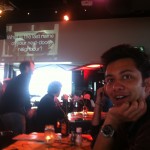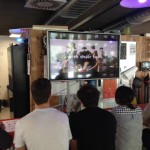The emergence of public screens in urban environments is linked to the commercialization of the public domain, insofar as their content is primarily ad- based. Inhabitants of cities are thus treated as consumers rather than citizens. Artists and media activists have frequently attempted to subvert this commercialized approach. In collaboration with Het Nederlands instituut voor Beeld en Geluid (the Dutch Sound and Vision Institute), this study demonstrates that, through the creation of meaningful and location-specific content on semi-public and public screens, inhabitants are motivated to become active citizens rather than passive consumers. Here, the active citizen is encouraged to have a random encounter, or conversation with another person. In this way, this study shows that screens can transform interactions in large cities in an interpersonal and refreshing way.
Encounter
Gallery
Commissioner: Nederlands Instituut voor Beeld en Geluid

With the support of: Volkshotel

Team
Atossa Atabaki (NL) - BA New Media and Digital Culture, University of Amsterdam Nikhil Banerjee (IN) – Meng Eletromechanical Engineering, University of Southampton Lisanne Binhammer (CA) – BDes Ontario College of Art and Design University Orlando Cabanãs (MX) – BA Architecture, Unversity of Texas at San Antonio, MA Urban Planning, Politecnico di Milano Shreya Kumar (IN) – Product and Interaction Design, Srishti School of Art Design and Technology
→ Project Blog
















